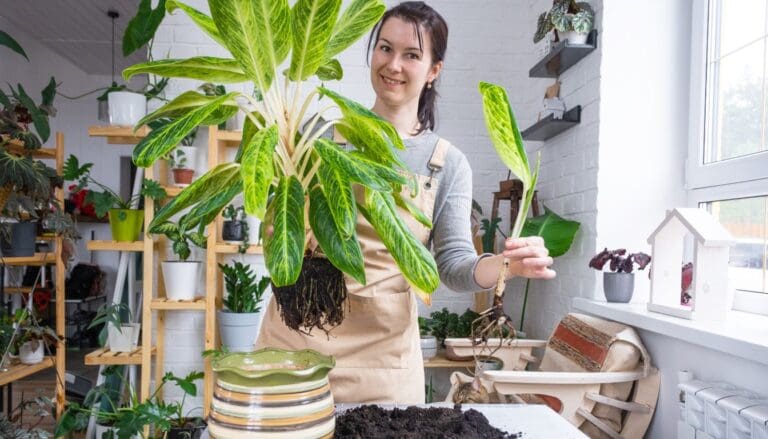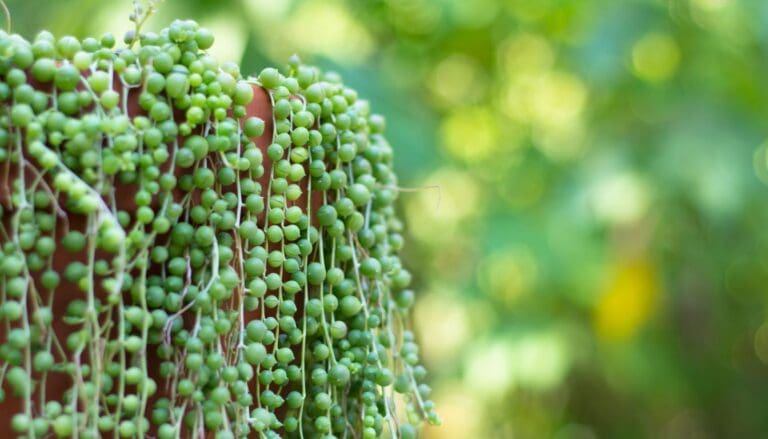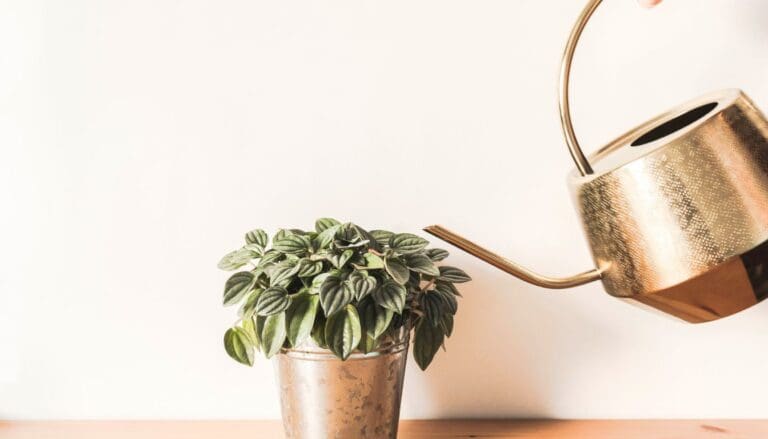Is My Calathea Getting Too Much Sun? (Sunburnt Calathea)
Calathea is one of those houseplants that enhance the indoor beauty of your house. They can survive in low light conditions, but they don’t react well to the direct sun. Direct sunlight causes sunburns in your calathea plant.
But how will you know if your calathea is getting too much light? How do you fix sunburned calathea?
Calathea prefers medium bright light as too much light can burn the leaves of calathea, leading to brown spots and crisp leaves. If your calathea is sunburned then, Clip off the damaged leaves and mist the plant to improve humidity. Also, relocate the plant to a spot that gets medium sunlight.
Calathea plants generally prefer indirect sunlight, and even slight exposure to direct sun rays for a short period can cause sunburns to their beautiful leaves.
If you have a sunburned calathea plant or your plant is getting too much light then, we are here to help you with all the ways that will help you can fix the issue and prevent further sunburn.

Please note: Simplify Plants is reader-supported. Some links in the post are affiliate links and I get a commission from purchases made through links in the post.
How do you know if Calathea is getting too much light?
If you expose your Calathea plant to the direct sun rays, the upper surface of the plant will start changing its color.
The suitable environment for this plant is filtered sunlight and moisture. Thus, exposure to direct sunlight will cause sunburn.
A leaf has two sides – the upper side receives direct sun rays, and the lower side is less exposed to the sun. As the upper surface of the Calathea leaf receives more sunlight, it will show you the sunburns.
Exposure to the direct sun rays makes the bleached areas of the leaf brown and crisp around the edges.
Leaves can change color due to other reasons, such as high concentrations of salts, chlorine, and minerals in tap water.
Browning of leaves is primarily due to the accumulation of minerals, salts, and chlorine present in tap water that affects the natural chemical balance of the plant.
But in the case of a sunburned plant, direct exposure to sunlight causes brown patches on edge and makes the leaves crisp.
What causes sunburn in the Calathea plant?

Being a very sensitive houseplant, Calatheas can easily become sunburned when they undergo some unfavorable circumstances.
A few specific reasons can cause such a situation. Let’s find out.
Direct sunlight
Calatheas are not accustomed to direct sun rays. In the wild, they are generally found under the shade of large trees. Thus their natural habitat provides dappled sunlight, not direct.
If you keep the plant under the uninterrupted direct sun rays, the leaves will turn brown or unhealthy after a short time, indicating sunburn.
Change in environments
Nurseries maintain a comfortable environment for every plant. It allows the plant to grow comfortably by creating a similar environment to its natural habitat.
Sunburns can occur when you bring the plant from the nursery to your home. Our home generally doesn’t have controlled temperatures for different plants.
Even a little sunlight can be too sunny for the Calathea.
Temperature
The heat from direct sunlight is different from the heat in the atmosphere.
Atmospheric heat is still bearable for the plant, but direct heat is way too much. Thus, keeping the plant indoors and away from direct sunlight is recommended.
How to prevent sunburn in Calathea?

Keeping your Calathea healthy is in your hands. Plants are sensitive in general, and then comes the houseplants that need even more care and nurturing.
Slight negligence can cause harm to your plant. But if you are careful and take proper care of the plant, one can easily prevent it from harm.
Sunburns are common if you don’t position the Calathea correctly.
There are many ways to prevent the Calathea plant from getting sunburned. We have mentioned some general points which might be helpful.
- If you have a shade-loving plant like the Calathea, you should always keep it under a shade where it will not receive direct sun rays.
- To prevent sunburn, maintain the lighting of the area where you plan to keep the Calathea. Maintain the surrounding of the plant to make it as comfortable as possible.
- Temperature also acts as a determining factor in preventing sunburns. Calathea can adjust itself to a specific temperature, but the direct sun rays will be too much.
- Keep the environment as moist as possible. Water the plant properly, make the soil moist but do not drench it in water. The moisture can absorb the internal heat and prevent your Calathea from getting sunburned.
What to do if you have a sunburned Calathea plant?
If you own a Calathea Plant, and its place is near any window or door where it receives direct sunlight, check the color of its leaves.
Compare it with other leaves that do not receive direct sunlight. If you notice discoloration, then your plant is sunburned.
It is never too late to fix a sunburned calathea. If the Calathea has already undergone damage, you can’t reverse it; but you can cure it.
A sunburned Calathea plant is mostly brown and crisp on the edges of the leaves, but there may be exceptions.
Calathea is a tropical plant that grows under the trunk of large trees with little to no sunlight. Therefore, direct sunlight is an unfavorable condition for it.
If your plant is already sunburned:
- You should first place it in a shady and moist place.
- Water the plant properly and try to create a comfortable surrounding to avoid further damage.
- Place the plant in a less bright area, and if possible, buy filtered lights. They are better than the direct sun rays.
- Try to trim off the damaged leaves because they will not heal or turn healthy again.
- Last, never add fertilizers to a sunburned plant. It will worsen the condition, and the plant will get more dehydrated.
How to save a sunburned Calathea plant?

Calathea is one of those plants that can survive in low light conditions because they can’t tolerate direct sunlight. Direct exposure to sun and high temperatures are some unfavorable climatic conditions for the Calathea.
If you want to save your plant from further sunburns, use filtered lights.
In the nursery, garden shops, and botanical gardens, they maintain a specific light to reduce the chances of sunburn. Filtered lights for houseplants are readily available in the market or nursery for sale.
The more dryness and heat in the atmosphere, the more it will affect your plant. Try to control the moisture level around your plant.
Calatheas are comfortable when they are in an environment with 60-80% humidity or moisture. So, try to keep the plant as moist as possible. Use humidifiers or spray water on its leaves.
Water the plant properly. It will help to lower the internal temperature of the plant and prevent it from drying.
Trimming off the damaged leaves is advised because, after all, they will never be the same.
Along with them, you can prune some more leaves to reduce some stress from the roots. This will help the plant recover faster.
Although there is no cure for a damaged or sunburned plant, these are some measures one can adopt to save their Calathea from further sunburn.
Tips for a healthy Calathea
Caring for your Calathea can become a cup of tea once you are well aware of its basic requirements. There are a few needfuls one should positively follow to keep their Calathea healthy.
- Keep the plant away from direct sunlight. If possible, use filtered lights. There, you can balance the light intensity as per your plants’ requirements.
- Check the water quality. Tap water generally has high chlorine, iron, and other minerals, which can be harmful to your plants. Nurseries use treated water or filtered water to keep the plant healthy.
- The plant should be well watered. Keep the soil moist but not soggy.
- Use good quality soil. The composition of the soil used is essential for the health of the plant. It promotes healthy nutrition and balance. Many soils have different moisture-holding capacities, and one should choose according to the plant’s needs.
- Increase humidity around the plant. Use humidifiers or create mist using spray bottles.
- Maintain a suitable temperature around your Calathea. Too much heat can make the plant dry and cause sunburn. The indoor heat is bearable for them, but the direct scorching heat of the sun will dry it out.
- Use balanced fertilizers to prevent overfertilization and use pesticides to keep the pests away.
Final words
We want to conclude by saying that to protect your Calthea by keeping it away from direct sunlight, maintaining the suitable temperatures around it, watering the plant properly, and keeping the soil moist but never soggy.
Don’t panic if you find that your Calathea is sunburned. Bring it to a shadier spot, prune the affected and damaged parts, and avoid fertilizing the plant. Let it recover from the sunburn and the stress caused due to direct sun exposure.
Once your Calathea bounces back to health, you can take care of it the way we have mentioned in the article to save it from further sunburn.
Source: NCBI, University of Florida, Wikipedia, Growing Indoor Plants with Success, Agriculture, and Natural Resources, University of California, Missouri Botanical Garden.
Recommended Garden Supplies
| Product Image | Our Recommended Gardening Supplies | Check Offers! |
|---|---|---|
Top Top
Top
Top
Top
Top
Top
Top
Top | rePotme Houseplant and Tropical Classic Potting Soil Mix | Check Offer On Amazon |
 Top
Top
Top
Top
Top
Top
Top
Top | Espoma Organic Indoor Plant Food | Check Offer On Amazon |
 Top
Top
Top
Top
Top
Top
Top
Top | GooingTop LED Grow Light 6000K Full Spectrum Clip Plant Growing Lamp | Check Offer On Amazon |
 Top
Top
Top
Top
Top
Top
Top
Top | Soil Moisture Meter | Check Offer On Amazon |
 Top
Top
Top
Top
Top
Top
Top
Top | Govee Hygrometer Thermometer, Bluetooth Enabled! | Check Offer On Amazon |
 Top
Top | LEVOIT Humidifiers for Large Room(Best For Plants) | Check Offer On Amazon |
 Top
Top
Top
Top
Top
Top
Top
Top | Upgraded DIY Automatic Drip Irrigation Kit, 15 Potted Houseplants Support | Check Offer On Amazon |
 Top
Top
Top
Top
Top
Top
Top
Top | Stainless Steel Heavy Duty Gardening Tool Set | Check Offer On Amazon |
 Top
Top
Top
Top
Top
Top
Top
Top | Bonide Insecticidal Soap | Check Offer On Amazon |
 Top
Top
Top
Top
Top
Top
Top
Top | Bonide 32 oz Spray Neem Oil for Organic Gardening | Check Offer On Amazon |
 Top
Top
Top
Top
Top
Top
Top
Top | Garden Safe Fungicide | Check Offer On Amazon |






